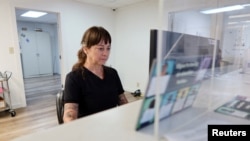All About America explores American culture, politics, trends, history, ideals and places of interest.
Women are never the right age for leadership in the workplace, according to new research that finds a woman is often judged as too young and inexperienced, too busy with her children, or past her prime as she advances through middle age.
The research, published in the Harvard Business Review, examines how age bias is used to justify discrimination against women. Researchers surveyed 913 female leaders in four U.S. industries: higher education, faith-based nonprofits, law and health care.
“No age was the right age to be a woman leader,” Amy Diehl, a gender equity researcher and one of the co-authors of the report, told VOA via email. “They go from being perceived as too young to too old in an instant.”
Female leaders under 40 were often mistaken for support staff.
“Some were called diminishing pet names, like ‘missy’ or ‘kiddo,’” Diehl said. “Credibility deficit was another problem — women of color especially noted this. They had learned to introduce themselves with a summary of their resume just so they would be believed.”
Women between the ages of 40 and 60 were viewed as having too many family responsibilities, as well as being too difficult to manage. Menopause was also used as an excuse not to hire older women, according to Diehl.
Meanwhile, women over 60 were seen as too close to retirement to promote, so it wasn’t worth investing in their professional development.
“Gendered ageism seems to be one of the remaining socially acceptable ways to discriminate overtly against women,” Leanne Dzubinski, a report co-author and professor of leadership at the Asbury Theological Seminary, said via email.
While men in their 40s and 50s are generally seen as having the breadth of experience that puts them at the top of their game, women at the same stage in their career are usually viewed much differently, according to Amber Stephenson, a report co-author and professor of management at Clarkson University in New York.
“Being perceived as less competent or less valuable to the organization, less innovative, not promotable, or less capable of assuming leadership responsibilities,” Stephenson said via email.
All of this suggests there is no perfect age to be a female leader.
“While there are previous notions of a ‘sweet spot’ where women are considered most capable or have an optimal experience, our data just didn’t suggest that,” Stephenson said.
Ageism against women is so embedded in the workplace that eliminating it will require changing entire organizational cultures, structures and stereotypes, according to Dzubinski, who along with Diehl co-authored the book, “Glass Walls: Shattering the Six Gender Bias Barriers Still Holding Women Back at Work.”
“We recommend the ‘flip it to test it’ approach. If a woman is being discounted for some opportunity, leaders should ask themselves if they would make the same comment about her male peer,” Dzubinski said. “If younger men ‘have potential’ while younger women are ‘too young,’ and if older men ‘have great experience and wisdom’ while older women are ‘past their prime,’ then that’s gendered ageism at work.”
The researchers say they like to address their recommendations to leaders, who have the power and responsibility to create a healthy work environment for all employees.
“Like all other types of gender bias, gendered ageism is completely solvable,” Dzubinski said. “We know what the problem is, and we know how to fix it.”






